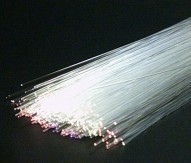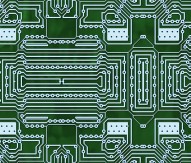
Visualisation in digital science
Professor Jos Roerdink, of the Johann Bernoulli Institute for Mathematics and Computer Science of the University of Groningen, presents new visualisation approaches in digital science to advance collaborative decision making.
The size, high dimensionality, and complexity of data being captured and manipulated in many scientific fields continue to increase. In particular, the modern digital era offers a deluge of complex data accessible via the internet.
Understanding such data for a diverse range of applications requires progressively more advanced and powerful tools. Sometimes the scientist wants to address specific questions, either involving the statistics of large amounts of data or searching for special patterns in the ocean of data. Also, the investigator may want to explore the data in search of unexpected phenomena, which requires human intelligence and interaction. Visual analytics, that is, the combination of automated data processing with human reasoning, creativity, and intuition, supported by interactive visualisation, is one of the prime methodologies that allow putting the human in the loop.
The Scientific Visualization and Computer Graphics group of the Johann Bernoulli Institute is involved in several research initiatives that require advances in visual analytics and collaborative e-science environments.
In the medical area, the University of Groningen and the University Medical Center Groningen have recently initiated the GLIMPS project; a collaboration of a large number of Dutch clinical centres to collect and analyse FDG-PET scans for early-phase prediction and diagnosis of neurodegenerative brain diseases, such as Parkinson’s disease. The goal is to identify distinctive structural and functional brain patterns and derived quantities like network patterns of brain activity, which can aid medical doctors in patient diagnosis. The visualisation group works on the development of visual analytics tools that combine machine learning and interactive visualisation. These tools are essential in the research stage for understanding the behaviour of machine learning algorithms, as well in the clinical stage for presentation of the predicted outcomes in an intuitive way to both doctors and patients.
Observational Astronomy is a second application area in which our group is active. This area is producing enormous data streams at an ever-increasing rate. Modern astronomical surveys provide not only image data but also catalogues of millions of objects, each object with hundreds of associated parameters. New tools must be developed that can cope with the sheer data volume which has entered the petabyte regime. We have been collaborating for many years with the Kapteyn Astronomical Institute of the University of Groningen to develop new visual analytics techniques for exploring these high-dimensional data sets effectively.
Recently, we have embarked on a new research project, ‘e-Visualization of Big Data’, funded by the Netherlands Organisation for Scientific Research and the Dutch e-Science Center. Partners include the Johann Bernoulli Institute for Mathematics and Computer Science, the OmegaCEN Center for Information Technology of the Kapteyn Astronomical Institute, and the Donald Smits Center for Information Technology of the University of Groningen.
The long-term goal of this project is the creation of a distributed e-science environment, accessible through the internet to scientists and analysts from all disciplines, which allows fast evaluation, analysis, and decision making. In this project we work with science teams from areas with specific requirements on big data visualisation. The two primary areas are medicine and astronomy in which we already have extensive experience, as outlined above. Other potential applications are real-time handling of 3D electron microscopy archives, processing sensor data for monitoring the quality and possible critical state of dikes in the Netherlands, or managing electricity grids under conditions such as power plant failures and unexpected weather conditions.
What is common to all these cases is the need for interactive query and visualisation mechanisms that can be used over the internet to support scientific discovery and rapid decision making. The project also aims to operate decision theatres, which allow small to large groups to participate in the decision making by utilising visualisation environments, ranging from large touch-sensitive displays to a dome theatre (Infoversum Groningen) which is now under construction.
There are several – past and present – research initiatives at the Johann Bernoulli Institute that relate to our project: visual analytics within the FP7 programme Vismaster, GPU computing within the FP7-SME scheme, ICT for home care and healthy ageing, ICT infrastructures within the FP7 programmes Smart Homes and Greener Buildings, or brain-inspired computing within the Human Brain Project, to name a few.
We aim to expand our local and national e-science collaborations at the European level within the Horizon 2020 programme. Several key priorities of this programme match perfectly with our ambitions: advancing Digital Science through creating e-infrastructures and collaborative environments; public private partnerships; and multidisciplinary collaborations to address several societal challenges: sustainable society, energy, and healthy ageing, which are the three primary focus areas of the University of Groningen. We are looking forward to meeting new partners and challenges in this endeavour.

Professor Jos Roerdink
Johann Bernoulli Institute for Mathematics and Computer Science
University of Groningen






